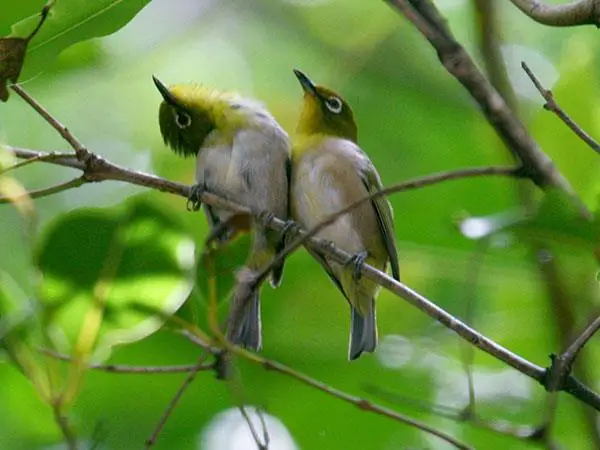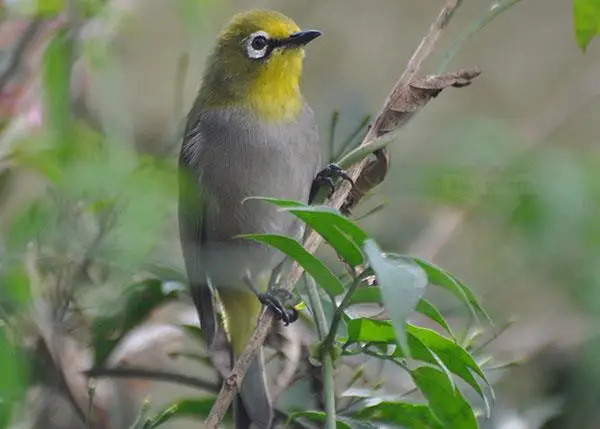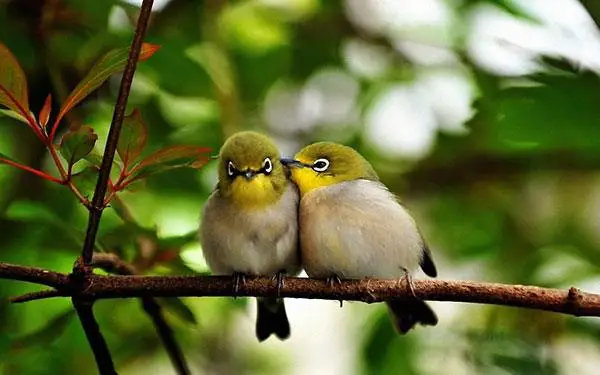Variety Overview
English Name: White-eye Bird
Origin: Southern Asia to Oceania, Africa
Price Range: $2.8 to $140
Size: 9 to 12 cm
Lifespan: 3 to 5 years
The White-eye Bird has three main species: the Dark Green White-eye, the Red-flanked White-eye, and the Grey-bellied White-eye.
Morphological Features and Identification
The Japanese white-eye (Zosterops japonicus) is a small bird measuring 9-12 cm in length. It has a small beak that is half the length of its head and curves slightly downward at the tip. Its nostrils are covered by a thin membrane, and it has a retractable tongue tipped with hard keratin fibers. The bird’s wings are rounded and long, while its tail is short. It also has long, sturdy tarsi. Both males and females look alike. This small insectivorous bird resembles warblers in both size and color. The name “white-eye” comes from the distinctive white ring around its eyes formed by short white down feathers.
Maintenance Tips

Seasonal Care:
Spring
With spring’s arrival comes warmer temperatures and nature’s revival; Japanese White-eyes (Zosterops japonicus) become more active too. However, early spring weather can be unpredictable with large temperature swings between day and night. When giving water baths or sunbathing sessions or taking your bird out for a walk, always consider its health status and adaptability. Spring marks their breeding preparation phase; most enter mating season with frequent singing and heightened activity levels. During this time, reduce protein- and fat-rich foods for male birds while increasing green vegetables to prevent overexcitement that might lead to injuries or disturbances at night which could result in feather loss. This season also sees a higher incidence of diseases among these birds; thus it’s crucial to strengthen daily management practices—monitor diet closely along with environmental hygiene—and regularly observe their activity levels and fecal condition to catch any abnormalities early on.
Summer
Summer marks both breeding season and a critical molting period for Japanese White-eyes—making it their busiest time of year! Extra care must be taken regarding their diet: ensure clean drinking water at all times; feed small amounts frequently but consistently throughout this period following a principle where nutritional intake starts low then increases towards later stages—particularly boosting protein & mineral content—to expedite feather renewal processes.
Autumn
Autumn brings joy as it’s typically considered Japanese White-eyes’ happiest season due to ideal conditions: average temperatures hover around 20°C (68°F), sunlight is gentle yet ample while humidity remains low—all fostering optimal growth environments! An old saying goes “Spring nourishes bones; autumn nourishes fat.” Accordingly adjust diets by upping fatty food proportions appropriately during fall months especially if molting isn’t complete yet—alongside increased vitamin intake focus on supplementing animal proteins until new feathers fully grow before transitioning back into high-fat feeds gradually.
Winter
Winter’s colder weather necessitates focused management aimed at ensuring safe overwintering conditions: consistently provide higher amounts of protein & fat-rich foods while maintaining regular outdoor activities whenever possible.
Sunbathing:
Sunbathing offers numerous benefits for birds. Under captive conditions, as long as the weather is clear, it’s important to allow your birds to sunbathe daily.
Spring: Ensure your birds stay warm. If possible, place them on a balcony slightly away from aluminum alloy doors and windows. When you leave, close the window but avoid drawing the curtains.
Summer: Avoid direct sunlight exposure. When you’re home, let your birds sunbathe around 7 AM for about 10 minutes but make sure they are not directly exposed to sunlight. If you’re not home, don’t take them outside.
Autumn: Be cautious of the afternoon sun as it can be particularly hot. If you leave in the morning and don’t return by noon, position your birdcage in an area with minimal sunlight exposure. Unlike summer, avoid placing their cage outdoors or on a balcony without aluminum alloy windows due to significant temperature differences between day and night.
Winter: This season is straightforward; aside from allowing some afternoon sunbathing and water bathing, try to keep your birds indoors as much as possible.

Dietary Information
The Japanese White-eye has a highly efficient digestive system, capable of processing and excreting food within just two hours. As such, it’s crucial to provide continuous access to feed and water. While primarily insectivorous, this bird also has a particular fondness for honey and fruits, which should be included in its diet as well.
